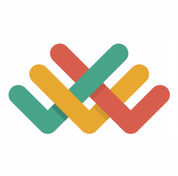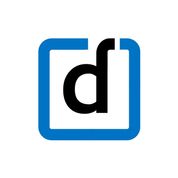HR Software is a comprehensive system that helps to keep, structure and manage information regarding employees. This means that every bit of information that deals with your employees’ matters is centralized on the system. Human resources software automates how businesses manage employees,... Read more

Researched and Edited by Rajat Gupta
Last updated: July 2025

Researched and Edited by Rajat Gupta
Last updated: July 2025
Common Features
Employee Database
Time & Attendance Management
Payroll Management
Onboarding
+ 63 more
Unique Features
Project Management
Billable & Non-billable Hours
Multiple Billing Rates
LMS Integration
+ 17 more
Showing 1-20 out of 241


RECOMMENDED
Add to compare
Watch Demo
Product Description
GoCo's all-in-one HR platform consolidates essential HR functions such as onboarding, benefits, and payroll, streamlining processes, and centralizing all HR data. It brings HR data to life and provides tools to customize workflows for any HR process, policy, or checklist.
Read morePricing
GoCo offers custom pricing plan
Pros & Cons
GoCo centralizes all HR data in one place, making it easier to access, track, and manage employee information efficiently.
The platform allows businesses to tailor workflows for any HR process, policy, or checklist, ensuring flexibility to match unique needs.
GoCo consolidates key HR functions such as onboarding, benefits, and payroll into a single platform, simplifying management and reducing the need for multiple systems.
GoCo may lack some advanced features required by larger organizations, especially for more complex HR processes or deep analytics.
While user-friendly, the wide range of customizable options may lead to a learning curve for new users unfamiliar with the platform’s capabilities.
9.7
Spot Score

Performance Management System
Add to compare
Product Description
The Lattice is a performance management system built for medium to small, fast-growing sales teams. It leverages the latest technology to deliver transparency and alignment across a team.
Read morePricing
Free Trial available
Starts from $9/User/Month
Pros & Cons
Intuitive interface and robust features tailored for team appraisals, enabling structured feedback loops and continuous improvement.
Easy organization and tracking of KPIs, goals, and feedback, simplifying performance management and goal setting processes.
Facilitates HR management, 1:1 meetings, and performance reviews seamlessly in one place, enhancing career management.
Note-taking feature boosts efficiency for 1:1 meetings, career growth tracking, and issue clarification.
Some users find the tool a bit hard to learn initially, suggesting the need for more interactive demos.
Limited customization options and slow rollout of new features hamper creativity and workflow organization for some users.
9.4
Spot Score

Best for SMBs
Product Description
Remote.com is a remote work management platform that simplifies global payroll, compliance, and workforce administration for businesses of all sizes. It seamlessly integrates with HR systems, centralizing payroll data for security and accuracy. The platform enables effortless onboarding with ...
Read morePricing
Starts from $29/employee/month when monthly
Pros & Cons
Exceptional customer support that is quick, responsive, and patient, ensuring all user queries are resolved efficiently.
Support team members frequently go above and beyond to resolve issues, offering personalized and friendly assistance.
Easy-to-use platform with smooth navigation, enhancing the overall user experience.
Highly effective in addressing global employment needs, such as tax management and compliance, making it valuable for small businesses operating internationally.
Occasional delays in resolving issues on public or holiday schedules, leading to minor inconveniences.
Some users mention limited flexibility or dependency on support for solving certain issues that may hinder self-service.
9.2
Spot Score

RECOMMENDED
Product Description
Paychex Flex is a comprehensive HR software designed to help businesses in the United States manage their workforce efficiently. It offers tools for employee onboarding, HR administration, benefits management, and compliance support, ensuring businesses stay organized and compliant with labor ...
Read morePricing
Paychex Flex offers custom pricing plan
Pros & Cons
Helps businesses meet federal and state tax regulations.
Allows employees to access paystubs and tax forms independently.
Tracks employee time off seamlessly within payroll processing.
Accessible from anywhere, providing flexibility for businesses and employees.
Costs may vary, and pricing details are not readily available upfront.
Some users may require training to fully utilize all features.
9.5
Spot Score

For SMBs
Product Description
Ceridian Dayforce provides a world-class suite of software solutions for automating human resources and payroll for small and medium-sized businesses. With proven expertise and quick implementation, Ceridian Dayforce solutions enable employers to focus on what really matters: their people and ...
Read morePricing
Ceridian Dayforce offers custom pricing plan
Pros & Cons
Combines multiple functions (HRIS, payroll, scheduling, recruiting, benefits) into a single, streamlined platform, reducing the dependency on multiple databases and manual processes.
User-friendly design with an intuitive interface, making navigation and basic operations easy even for non-technical users.
Cloud-based, enabling real-time data access and eliminating paper-based processes.
Allows robust customization and adaptability to fit specific company policies and workflows.
Initial implementation and setup can be complex, often requiring substantial training and adjustments to company workflows.
Customer support is often criticized for being slow, impersonal, and inconsistent, with email-based assistance sometimes leading to miscommunication.
9.8
Spot Score

Product Description
BambooHR is the complete HR platform that brings all your employee, payroll, time, and benefit information together in one place. Its software sets HR free to do great work and be more strategic, which helps the entire organization do the same.
Read morePricing
Free Trial available, Try Now
BambooHR offers custom pricing plan
Pros & Cons
Digitally automates HR processes such as document signing, onboarding, and payroll, saving significant time and reducing manual work.
User-friendly and intuitive interface suitable for both administrators and employees, resulting in high adoption rates.
Centralized access to employee information, paystubs, benefits, and HR documents, making it easy for users to find what they need.
Customizable features for tasks like PTO policies, onboarding, and reporting, allowing organizations to tailor the system to their needs.
Limited advanced features in certain areas when compared to more comprehensive HRIS platforms.
Pricing may be a concern for very small businesses or non-profits with tight budgets.
9.7
Spot Score

Product Description
Namely creates human resources software that benefits both the people that work for you and the people that work in your business by delivering everything HR needs to run smoothly. From hiring top talent and on-boarding them, to helping employees get the most out of their experience with you, ...
Read morePricing
Namely offers custom pricing plan
Pros & Cons
Namely provides robust analytics and reporting tools that enable HR teams to track key performance metrics and make data-driven decisions.
The platform’s focus on creating and sustaining human value ensures that employee satisfaction and engagement are prioritized, which can lead to higher retention rates.
Namely's user-friendly interface helps both HR professionals and employees navigate the platform with ease, improving overall user experience.
The platform is designed to streamline HR operations, improving the efficiency of HR teams by automating key processes like payroll, benefits, and performance management.
The platform’s pricing model might be on the higher side, especially for smaller companies with limited HR resources or budget constraints.
Some users may find the platform’s customization options a bit limited, especially when trying to tailor certain workflows or features to their specific needs.
9.6
Spot Score

Product Description
Paycor is a human capital management (HCM) platform that empowers leaders to modernize every aspect of people management and build winning teams. The software streamlines payroll processing, tax filing, and compliance management.
Read morePricing
Free Trial available, Try Now
Paycor offers custom pricing plan
Pros & Cons
Provides a wide range of features, including payroll, recruiting, onboarding, performance management, and benefits administration, making it a comprehensive HR platform.
Modern platform that is mostly user-friendly and offers integrations for payroll, time tracking, and employee onboarding.
Self-service tools like the Paycor mobile app enable employees to access payroll, hours, and pay stubs conveniently.
Helps automate hiring and performance reviews, saving significant time for HR staff and managers.
Consistently poor customer service with long response times, lack of assigned representatives, and frequent case mismanagement.
Error-prone implementation and setup processes, including incorrect payroll filings, data entry mistakes, and tax deductions from the wrong accounts.
9.6
Spot Score

Product Description
Workable is the simple, affordable Applicant Tracking System (ATS) purpose-built for small businesses. Features include Integrated Company Management (Shell), Receive, review and approve applicants from desktop or mobile device in real time, Attract more applicants than traditional ATS products ...
Read morePricing
Free Trial available, Try Now
Starts from $249/month when monthly
Pros & Cons
Simplifies recruitment by centralizing candidate information, increasing organization, and ensuring seamless collaboration across teams.
Offers an intuitive and user-friendly interface, making it easy to onboard hiring managers and recruiters with minimal training.
Automates manual tasks like job board postings, candidate tracking, and offer letter issuance, saving considerable time and effort.
Integration with email platforms, calendars, and HRIS systems enhances workflow efficiency and communication.
Limited flexibility and customization options, such as restrictions on editing workflows and approval pathways, which can be a challenge for larger organizations.
Reporting features can be insufficient for advanced analytics; custom reports are often delayed and require additional costs.
9.6
Spot Score

Add to compare
Product Description
Zoho People is HR software that makes it easy for any size business to manage payroll and employees. Centrally manage everything from online employee scheduling and time off request to performance reviews, benefits, commissions, talent management, and more.
Read morePricing
Free Trial available, Try Now
Starts from $1.25/User/Month when Billed Yearly, also offers free forever plan
Pros & Cons
User-friendly interface that is intuitive and easy to navigate, suitable for both technical and non-technical users.
Comprehensive HR management features, including attendance tracking, leave management, payroll, performance tracking, and onboarding processes.
Customizable dashboards and modules, allowing users to tailor the tool to their specific organizational needs.
Mobile application support, enabling employees and HR personnel to perform tasks seamlessly on the go.
Slower learning curve for new users, especially when configuring complex workflows or customizations.
Occasional issues with features like geolocation, user logins, and notifications in mobile apps.
9.5
Spot Score

Product Description
Factorial is an employee self service portal that helps organizations to lower their overall costs. It provides flexibility in mobility, financing and billing, expense reporting, work management and inspection report management seamlessly integrated with the core HRMS module. The Application ...
Read morePricing
Starts from $5.75/User/Month when Billed Yearly
Pros & Cons
Simplifies HR tasks by automating workflows like time tracking, payroll, and employee management.
User-friendly and intuitive interface, making it accessible even for non-technical users.
Comprehensive suite of features including onboarding, time off management, and document signing.
Enables efficient handling of employee records and centralized HR management in one platform.
Mobile app lacks some features such as manual clock-ins and historical data view.
Some features like the organization chart and custom field options are limited in flexibility.
9.4
Spot Score

Product Description
BrightHR is a powerful yet user-friendly HR software designed to streamline HR operations and enhance the employee experience. It offers secure storage of essential HR data and supports efficient management of employee records, attendance, and time-off requests. The platform features intuitive ...
Read morePricing
BrightHR offers custom pricing plan
Pros & Cons
Excellent customer service across the board, with representatives praised for being helpful, patient, and knowledgeable.
Clear and concise communication style makes the platform easy to understand, even for non-technical users.
User-friendly interface and system functions, enabling ease of use for individuals new to HR tools.
Training sessions and support staff provide thorough explanations, addressing all questions and ensuring smooth onboarding.
Some issues require multiple tries to resolve, indicating occasional inefficiencies in troubleshooting processes.
For users not well-versed in HR or technical matters, initial setup and navigation may feel overwhelming without support.
9.4
Spot Score

Product Description
Rippling is an all-in-one global workforce management platform that seamlessly integrates HR, IT, and finance into a unified system. Designed to streamline business operations, Rippling offers comprehensive tools for managing the entire employee lifecycle—from recruitment and onboarding to ...
Read morePricing
Starts from $8custom
Pros & Cons
Features a user-friendly interface with easy-to-navigate dashboards for efficient management.
Helps businesses stay compliant with local and international labor laws and tax regulations.
Suitable for businesses of all sizes, supporting both small teams and large enterprises with global workforce management capabilities.
Automates employee onboarding, payroll processing, benefits administration, and device provisioning, saving time and effort.
Some businesses may find restrictions in customizing specific workflows or reporting features.
The extensive feature set may require some time for new users to fully adapt and utilize the platform effectively.
9.4
Spot Score

Product Description
ZingHR is known for its cloud-based HCM suite and strong dedication to customer success. It provides a comprehensive, Hire-to-Rehire HCM solution using advanced technologies such as Blockchain, AI, Machine Learning, and Deep Learning Algorithms. The platform is built with a mobile-first ...
Read morePricing
ZingHR offers custom pricing plan
Pros & Cons
ZingHR fosters an inclusive culture, embracing diverse perspectives and promoting a workplace where employees from varied backgrounds can thrive.
The platform is designed to drive tangible business outcomes across people, profit, and sustainability (planet), aligning HR initiatives with broader organizational goals.
ZingHR’s mobile-first approach ensures employees can access and manage their HR needs conveniently from any device, improving overall user experience and flexibility.
The platform integrates advanced technologies such as Blockchain, AI, Machine Learning, and Deep Learning, enhancing data security, automation, and predictive analytics for better decision-making.
While the platform offers advanced capabilities, it may be more suited for larger enterprises, potentially lacking flexibility for smaller organizations with simpler HR needs.
ZingHR’s feature-rich platform might be overwhelming for smaller organizations or teams with limited HR resources, requiring more time and effort to learn and implement.
9.3
Spot Score

Product Description
Darwinbox is a modern, agile HCM Suite designed to help enterprises and growing businesses automate their daily HR processes, provide actionable insights, and create better workplaces. It enables organizations to improve efficiency, revolutionize talent management, and elevate the employee ...
Read morePricing
Darwinbox offers custom pricing plan
Pros & Cons
Comprehensive and integrated platform for managing the entire employee lifecycle, from recruitment to offboarding.
User-friendly interface with a clear and intuitive design, making it easy for employees to navigate.
Supports a wide range of HR functions, including attendance, payroll, leaves, reimbursements, tax declarations, and performance evaluations, all accessible in one place.
Provides seamless integration options with other tools like Microsoft Teams and custom apps.
Absence or infrequent mention of clear support for niche HR requirements may fall short for some specialized organizations.
Users occasionally find some customization options overwhelming without adequate guidance.
9.3
Spot Score

Add to compare
Product Description
Zimyo HRMS is an HRM Software that promotes quick and efficient performance of your core Human Resource Management functions. It helps simplify managing a large workforce according to various processes and requirements set in place by the organization, streamlining its process and reducing the ...
Read morePricing
Free Trial available, Try Now
Zimyo HRMS offers custom pricing plan
Pros & Cons
Streamlines HR processes by automating tasks like attendance tracking, payroll processing, leave management, and performance management, saving significant time and effort.
Offers a user-friendly interface and intuitive self-service features on both desktop and mobile, ideal for employees and HR personnel alike.
Comprehensive analytics and reporting tools with customizable dashboards and visual data representation enhance decision-making capabilities.
Mobile app includes geo-fencing and employee self-service, allowing users to access vital information like payslips, leave balances, and approvals in real-time.
Timesheet and shift management modules are less intuitive and limited in functionality compared to other modules.
Minor bugs and occasional issues, such as delays or mis-punches in mobile app clock-ins and clock-outs, can disrupt the user experience.
9.3
Spot Score

Product Description
FactoHR is a mobile-first, fully integrated HCM platform designed to empower businesses in building a high-performing workforce while streamlining HR operations. The solution offers a feature-rich mobile app, enabling employees to access their data and perform HR tasks anytime, anywhere, ...
Read morePricing
Free Trial available, Try Now
factoHR offers custom pricing plan
Pros & Cons
Simplifies payroll and attendance management with features like punch in/out tracking and automated calculations.
Provides accurate and efficient tools for managing employee data, including leaves, salary slips, and taxation.
Intuitive and user-friendly interface, making it accessible for all user levels without requiring extensive effort to implement.
Highly customizable, allowing users to tailor features to meet organizational needs.
Limited mention of advanced or specialized features may reflect a lack of versatility for larger or complex organizations.
No noticeable feedback on the quality of support or documentation, which could be crucial for implementation and troubleshooting.
9.3
Spot Score

Add to compare
Product Description
peopleHum combines the power of people, process and technology. It is the complete HR Solution from applicant tracking to payroll, career site, compensation management and time & attendance built from mobile-first engagement through social media and gamification.
Read morePricing
Free Trial available, Try Now
peopleHum offers custom pricing plan
Pros & Cons
Comprehensive HR platform with a wide range of functionalities, covering everything from recruitment to retirement.
User-friendly interface often compared to social media platforms, making it intuitive for employees and HR professionals.
Strong performance management capabilities with effective appraisal and feedback systems.
Customization options for reports and screens to suit specific organizational needs.
Outdated design elements on the user interface, leading to a perception of being old-fashioned or clunky.
Complexities and issues in tracking holiday entitlements, time off accruals, and payroll-related features.
9.3
Spot Score

Product Description
Keka is a web-based, Employee self-service software (HRIS) to manage employees. It's help in maintaining the important information about employees like salary structure, branch wise employees along with details of their insurance, leaves, current open vacancies and much more in one centralized ...
Read morePricing
Free Trial available
Keka offers custom pricing plan
Pros & Cons
Responsive, knowledgeable, and reliable support team ensures a seamless user experience.
Customizable to fit any company size and unique HR requirements.
User-friendly interface simplifies complex HR tasks such as payroll, attendance, and leave management.
Streamlines HR processes, reduces manual work, and boosts productivity.
Mobile app lacks certain functionalities, with limited options and occasional delays in updates.
Attendance synchronization glitches and delays in punch-in/punch-out updates can cause confusion.
9.2
Spot Score

Product Description
ClearCompany is cloud-based HR software that makes it simple to support your entire HR process, including recruiting, onboarding, and much more - all in one. It offers a wide range of integrated processes that provide you with a complete solution for your HR needs. This offers full-service ...
Read morePricing
ClearCompany offers custom pricing plan
Pros & Cons
Extremely user-friendly interface, making it easy to navigate even for first-time users and non-technical individuals.
Simplifies and streamlines the hiring process with customizable tools like email templates, text communication, and resume tracking.
Centralized platform that organizes everything in one place, eliminating the need for multiple tools.
Strong customer support with responsive account managers and quick issue resolution.
Lack of in-depth comments on potential drawbacks, making it unclear where the system might have limitations.
Some users may find the range of features slightly overwhelming initially without proper orientation.
Disclaimer: This research has been collated from a variety of authoritative sources. We welcome your feedback at [email protected].
Connecting Smart Buyers with Leading Sellers
Find the perfect software for your needs or showcase your product to 250,000+ buyers. SpotSaaS makes it easy for everyone to succeed